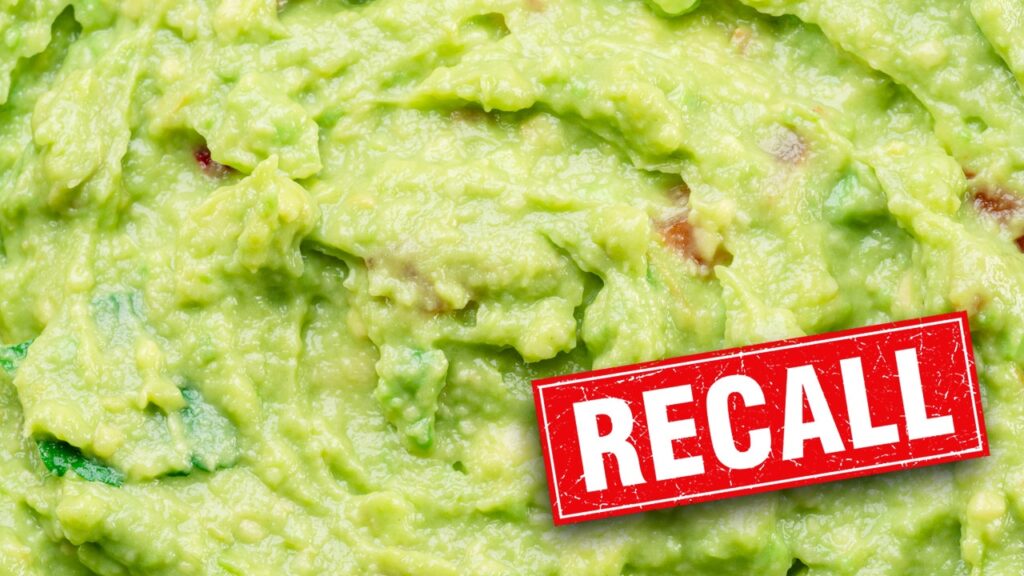:max_bytes(150000):strip_icc():format(jpeg)/GettyImages-2150242380-c05909915cb34aacaa0399a384c0bfc8.jpg)
Market Order vs. Limit Order: An Overview
When buying stocks, you have a few choices about how to place your order. You can order at the present asking price to lock in the exchange or set a price you’re willing to pay and see if it gets met. This is the difference between market and limit orders.
Market orders execute trades immediately at the present market price. You’ll get the stock right away, but the exact price might fluctuate slightly between when you place the order and when it executes.
Meanwhile, limit orders give you control over the exact price you’ll pay. You set the maximum price you’re willing to pay when buying (or minimum price when selling), and the trade only goes through if the market reaches your target. This approach provides more control but doesn’t guarantee the trade will go through. Below, we review the best ways to approach both types of orders.
Key Takeaways
- Market orders are meant to be executed as quickly as possible at the current market price.
- Limit orders set the maximum or minimum price you’ll pay or receive when buying or selling stock.
- Market orders work best for stable, frequently traded stocks where minor price variations matter less.
- Limit orders provide protection when trading volatile stocks or during periods of market uncertainty.
- The choice between orders depends on your investing goals, with long-term investors typically using market orders while active traders often opting for limit orders.
Market Orders
Market orders represent the simplest way to trade stocks—you’re effectively saying, “buy (or sell) this stock now at whatever the present price is.” When you place a market order, your broker will execute it as quickly as possible at the best available price.
It’s like booking a ride-share (e.g., Uber Technologies Inc. (UBER) at the current price surge. You need a ride now, so you’re accepting whatever fare is quoted, even if it fluctuates because of demand. A limit order, meanwhile, is like setting a “price alert” on the ride-share app and only booking if it meets your price. You’re willing to wait until the price hits your specific target. If it never does, that’s fine since you figure it’s not worth the cost for the ride.
Market orders come with an important caveat: the final price may differ from what you saw quoted, especially during volatile market conditions or with less frequently traded stocks. For example, if you place a market order for a stock showing $50 per share, but many buy orders hit simultaneously, you might end up paying $50.10 or $49.90. For widely traded stocks, this isn’t a major worry, but it’s good to keep in mind, especially as the spread between the price you bid and what the stock cost can add up if you’re a frequent trader)
For long-term investors buying blue chip stocks, the simplicity of market orders often outweighs the minimal price improvement you might get with a limit order.
All market orders follow priority guidelines, which means your order gets in line behind those already placed. This timing gap between placing and executing the order can lead to price changes, especially for large orders. For example, if you place a market order for 10,000 shares, buying that many shares could actually push the price up before your entire order is filled—this is not a problem most retail investors face.
Trading suspensions add another wrinkle to market orders. Stock exchanges can halt trading in individual stocks for various reasons, from technical problems to major news announcements. If you place a market order during a trading halt, it won’t execute until trading resumes—potentially at a very different price.
Timing also matters for market orders placed outside regular trading hours. If you place a market order after the market closes at 4 p.m. Eastern time, it will execute at the next day’s opening price, which could be significantly different from the previous day’s closing price. However, many brokers offer after-hours trading platforms that let you execute market orders outside regular trading hours, though these trades often carry added risks because of lower trading volume.
Large market orders are like throwing a boulder into a pond—they can create waves that shake up prices. That’s why institutional traders often break big orders into smaller pieces to lessen any impact.
Market Order Example
Suppose you want to buy 100 shares of XYZ Corporation by placing an order “at the market.” You see the stock trading at $10 per share on your screen, so you might expect to pay $1,000 total.
However, stock prices can change within seconds—indeed, often less. By the time your broker processes the order, the price might have moved to $10.10 per share, meaning you’d pay $1,010 for your shares. On heavily traded stocks like Apple Inc. (AAPL) or Microsoft Corporation (MSFT), these price differences are often minimal. But for volatile or thinly traded stocks, the difference between the price you see and what you pay can be more substantial.
When the market is stable and you’re trading major stocks like Apple or Microsoft, market orders typically execute within pennies of the quoted price. But when prices are moving quickly, that spread can widen significantly.
Limit Orders
Limit orders put you in control of the price you’ll pay or receive for a stock. With a limit order to buy, you set the maximum price you’re willing to pay. For selling, you’re setting the lowest price you’ll take.
These orders are particularly valuable when trading the following:
- Volatile stocks that frequently make large price moves
- Thinly traded stocks with wide spreads between buying and selling prices
- During periods of market uncertainty
- When price is more important than getting the stock immediately
The critical trade-off with limit orders is certainty of price versus certainty of execution. While you know the worst price you’ll get, your order might never execute if the stock doesn’t reach your specified price.
Since commissions have largely gone away, the real cost difference between market and limit orders relates to the execution price and the opportunity cost of missed trades.
Limit Order Example
Suppose you’re interested in buying XYZ stock, trading at $9.80. Your research suggests the stock fluctuates between about $9.50 and $10.10 throughout the day. Instead of buying immediately at $9.80, you place a limit order to buy 100 shares at $9.50.
Here’s what could happen:
Scenario 1
- The stock price drops to $9.50 later that day
- Your order executes automatically, buying 100 shares at $9.50
- Total cost: $950 ($9.50 × 100 shares)
Even if the price falls further to $9.00, you still get your target price
Scenario 2
- Instead of dropping, XYZ’s price rises to $11.00
- Your limit order remains unfilled because the stock never reached your $9.50 target.
The result is you potentially miss out on the upward move. This is the main trade-off with limit orders: you get more control over price at the cost of potentially not executing your trade.
Many brokers allow you to place limit orders outside market hours. The limit orders are placed into a queue to process as soon as trading resumes.
Key Differences
Market and limit orders serve different purposes, and understanding their specific characteristics can help you figure out which is right for which circumstances you’ll come across:
Execution Speed vs. Price Control
Market orders prioritize speed—they execute immediately at whatever price is available. Limit orders, by contrast, prioritize price control, and wait to execute until your price is matched.
Market orders are particularly risky during premarket and after-hours trading when fewer traders are active, and prices are generally more volatile. Many experienced investors avoid placing market orders during these times.
Level of Certainty on Trade Getting Done
Market orders almost always execute because you’re agreeing to take the current market price. The main (and rare) exception would be during trading halts or with highly illiquid stocks. Limit orders, however, are not guaranteed to go through.
Order Complexity
Market orders are more straightforward to place—you simply specify how many shares you want to buy or sell. Limit orders require more decisions: setting a target price, deciding how long the order should stay active, and adjusting the price should market conditions change.
-
Easier to set up because no price is specified
-
Will almost always be filled as trade executes at the current market price
-
Doesn’t have an expiration because it usually fills immediately
-
More suitable for stable investments
-
You must specify the price at which the order will trigger
-
May not be filled if the limit order price isn’t met
-
Often done with a date when the order ends
-
Also usable to get your exact price, but more worthwhile for volatile, unpredictable investments
Partial Orders
Stock orders aren’t always filled completely. This is particularly true with limit orders but can also happen with market orders, especially for larger trades.
A partial fill occurs when only some of your ordered shares get executed. For example, you might place a limit order to buy 1,000 shares of XYZ at $25, but only 300 shares are available at that price. In this case, you’ll get a “partial fill” of 300 shares, while the remaining 700 shares stay on order until either more shares become available at your limit price, your order expires, or you cancel the unfilled portion.
Market orders can also result in partial fills, particularly in the following situations:
- Trading thinly traded stocks
- Placing large orders
- Trading near the market open or close
- During periods of high volatility
What Is a Good-‘Til-Canceled (GTC) Order?
These stay active until either filled or manually canceled by the investor. Most brokers set a maximum time limit (often 30 or 90 days) for GTC orders. These orders are handy with limit orders when you’re patient about getting your target price. For example, if you place a GTC limit order to buy a stock at $50, it remains active even if the stock is trading at $55, giving you the chance to get your price should the stock eventually drop.
Is a Market Order Better Than a Limit Order?
A market order is more useful in some situations. Many retail investors aren’t concerned about the tiny fluctuations in price on widely traded stocks.
Is a Limit Order Cheaper Than a Market Order?
A limit order is a more specific type that often has more features, customizations, and options, so that it may cost more. However, many online brokerages offer free trading based on restrictions or limitations that offer both limit and market orders for free.
What Is a Fill-or-Kill Order?
These must be filled immediately in their entirety, or they’re canceled (“killed”) automatically. These orders are useful when you need all shares at once and don’t want partial fills.
What Is a Stop Order?
These are used to buy or sell a security at the market price when the market price has a price you set. This type of order combines functions of both a market order and a limit order because it only executes when a specified price is reached. However, the security is often traded at an unknown price dictated by the market.
The Bottom Line
When placing stock orders, you must choose between the speed and certainty of market orders and the price control of limit orders. Market orders execute immediately at or near the current price, making them worthwhile for buying major stocks or when immediate execution matters more than getting a specific price.
Limit orders provide price protection by only executing at your specified price or better, but they might not fill at all. No order type is inherently better than another—the best choice depends on your risk tolerance and trading strategy.



